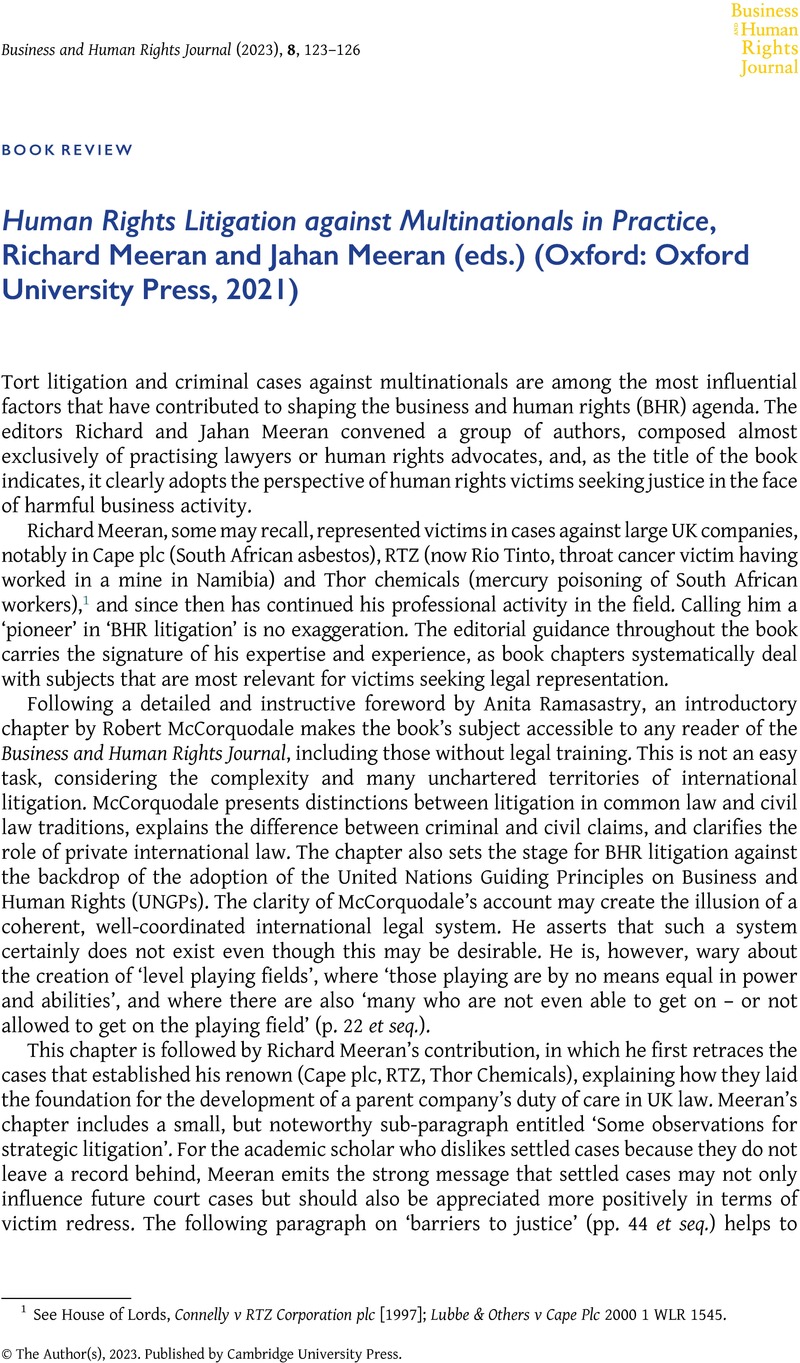No CrossRef data available.
Article contents
Human Rights Litigation against Multinationals in Practice, Richard Meeran and Jahan Meeran (eds.) (Oxford: Oxford University Press, 2021)
Review products
Human Rights Litigation against Multinationals in Practice, Richard Meeran and Jahan Meeran (eds.) (Oxford: Oxford University Press, 2021)
Published online by Cambridge University Press: 03 January 2023
Abstract
An abstract is not available for this content so a preview has been provided. Please use the Get access link above for information on how to access this content.

- Type
- Book Review
- Information
- Copyright
- © The Author(s), 2023. Published by Cambridge University Press
References
1 See House of Lords, Connelly v RTZ Corporation plc [1997]; Lubbe & Others v Cape Plc 2000 1 WLR 1545.
2 Nevsun Resources Ltd v Araya 2020 SCC 5.
3 Lungowe and others v Vedanta Resources Plc and another [2016] EWHC 975, AAA & Ors v Unilever plc [2018] EWCA Civ 1532, Okpabi v Royal Dutch Shell plc [2021] UKSC 3.
4 Município de Mariana v BHP Group (UK) Ltd [2022] EWCA Civ 951 – the book was already published when the Court of Appeal ruled in the BHP case.


